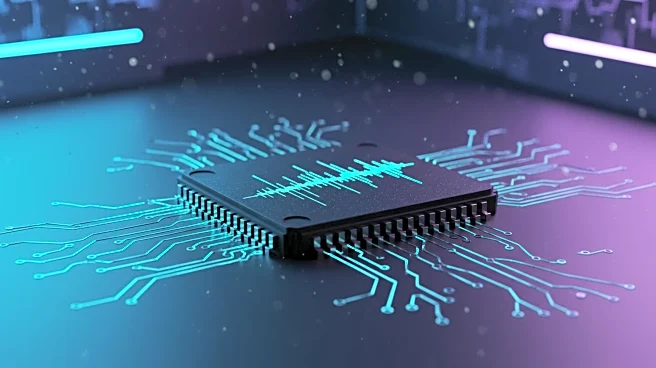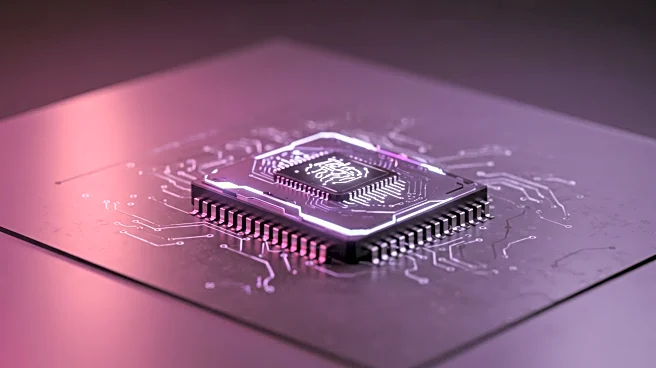What's Happening?
Cornell University researchers have unveiled a groundbreaking microchip, dubbed the 'microwave brain,' which represents the first processor capable of computing on both ultrafast data signals and wireless communication signals using microwave physics. This innovative chip, detailed in the journal Nature Electronics, is a fully integrated microwave neural network on a silicon microchip. It performs real-time frequency domain computations for tasks such as radio signal decoding, radar target tracking, and digital data processing, all while consuming less than 200 milliwatts of power. The chip's design allows it to distort frequencies in a programmable manner, enabling it to be repurposed for various computing tasks. Unlike traditional digital neural networks, this chip uses analog, nonlinear behavior in the microwave regime, allowing it to handle data streams at speeds much faster than most digital chips.
Why It's Important?
The development of this microwave neural network chip marks a significant advancement in computing technology, particularly in terms of power efficiency and speed. By bypassing many of the signal processing steps required by digital computers, the chip offers a more efficient solution for complex computations. This innovation could have substantial implications for industries reliant on high-speed data processing, such as telecommunications and defense. The chip's ability to perform complex tasks with high accuracy and low power consumption makes it suitable for applications in hardware security and edge computing. This could lead to more efficient and secure wireless communication systems and enable advanced computing capabilities on portable devices like smartwatches and smartphones.
What's Next?
While the chip is still in the experimental phase, researchers are optimistic about its scalability and potential integration into existing microwave and digital processing platforms. Efforts are underway to enhance its accuracy and further reduce power consumption, which could expand its applicability to a broader range of devices and systems. The research team is exploring ways to deploy the chip in edge computing applications, potentially allowing smart devices to perform complex computations independently of cloud servers. This development is supported by the Defense Advanced Research Projects Agency and the Cornell NanoScale Science and Technology Facility, indicating a strong interest in advancing this technology for practical use.











